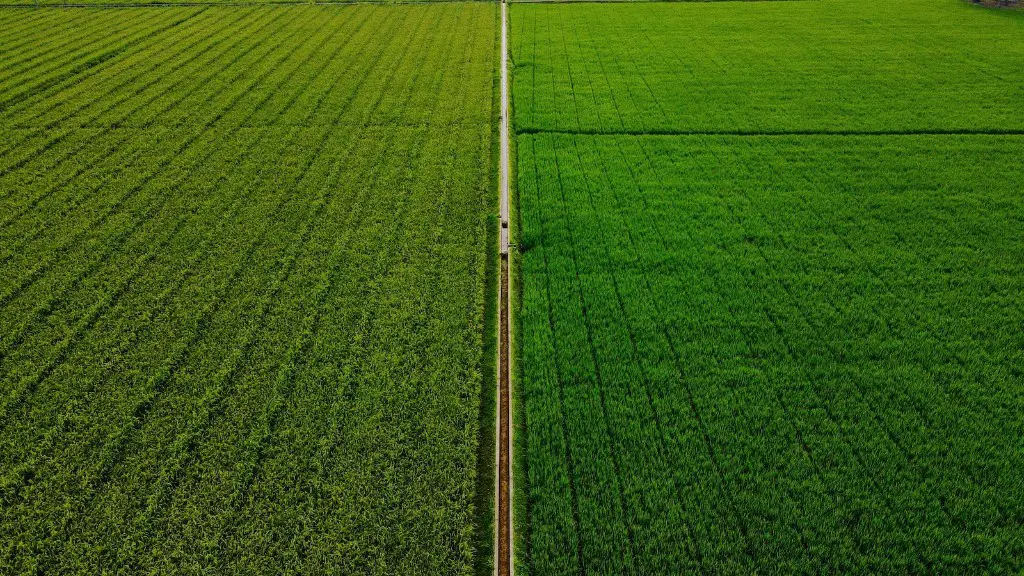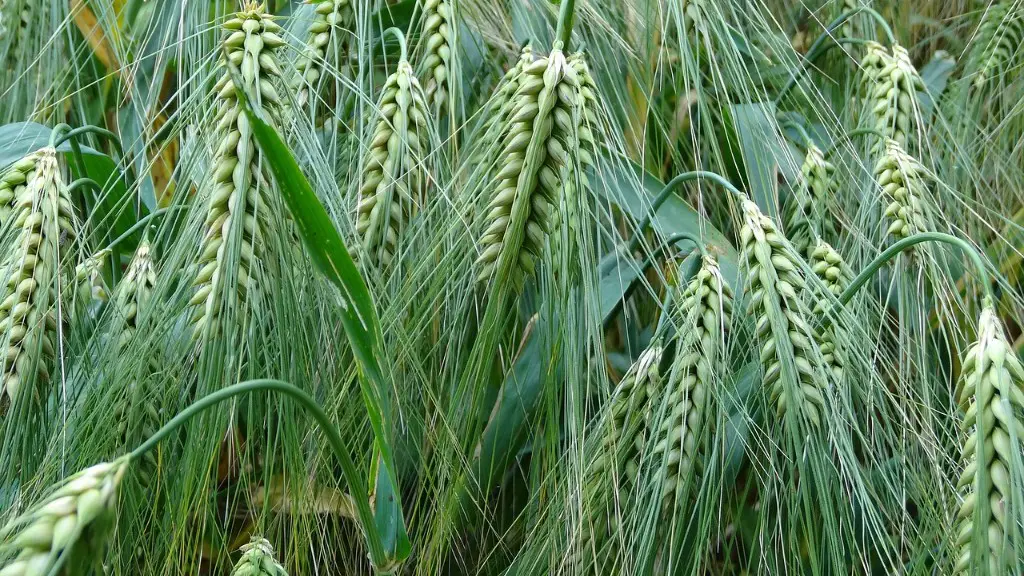Biotechnology is increasingly being used in agriculture to improve crop yield, reduce pesticide and fertilizer usage, generate pest- and disease-resistant plants and animals, and create more nutritious and flavorful food. In short, biotechnology is being used in agriculture for genetic modification, creating transgenic organisms, and utilizing microorganisms as biofertilizers.
Genetic modification involves altering or inserting genes from one organism into another to give the organisms qualities found in the donor organism. Plants or animals having such alterations are known as transgenic organisms. Scientists use biotechnological techniques to make these modifications. For example, scientists have created plants that have genes from bacteria that increase the plant’s ability to resist herbicides or diseases. These so-called “super plants” are increasingly being used by farmers to ensure healthy crops and reduce overuse of chemicals and other inputs.
Another biotechnological advance is the use of biofertilizers, which are microorganisms that enhance crop yield by increasing the availability of nutrients in the soil. Biofertilizers also reduce the need for artificial fertilizers, which can harm both the ecology of the soil and the health of the consumers. They also improve the flavor of the crops, thus increasing their value.
Additionally, biotechnological advances are being used to improve the characteristics of livestock. For example, gene-editing tools allow scientists to selectively insert or remove genes from the DNA of farm animals to make them resistant to disease, able to withstand climate fluctuations, and to produce more milk or meat. This increases the quality of the crop as well as the efficiency of production and reduces the environmental impact of animal husbandry.
In conclusion, biotechnology is increasingly being used in agriculture to improve crop yield, reduce pesticide and fertilizer usage, generate pest- and disease-resistant plants and animals, and create more nutritious and flavorful food. These applications have become an indispensable tool for farmers to ensure healthy crop production.
Synthetic Biology
Synthetic biology is a type of biotechnology that involves combining different genetic and biochemical material to design and construct novel biological systems. It focuses on the use of engineering principles to facilitate the understanding of natural systems, and to design and program organisms that are genetically modified to carry out specific functions. This can involve the construction of new viruses, bacteria, and other organisms with novel characteristics—such as enhanced nutritional value—that could be used in agriculture to increase yield, reduce labor costs, or create new products.
For example, researchers in synthetic biology have designed designer cocktails for plants to stop them from flowering, to increase their size and yield, or to increase their resistance to disease. Additionally, synthetic biologists are also exploring ways to reprogram the biological pathways of organisms to express specific proteins or even produce drugs. An example of this is the use of yeast cells to produce insulin. By using synthetic biology, it is possible to design organisms that have the desired traits without adding foreign genes.
In addition, synthetic biology can be used to create new organisms with improved ability to absorb water, resist stress, and produce desirable proteins. This can improve the quality of food and increase productivity. Furthermore, it can also be used to create plants that utilize nitrogen more efficiently, reducing fertilizer usage and the environmental impacts of excessive use of such inputs.
Overall, synthetic biology has the potential to revolutionize agriculture and offer solutions to the challenges of food insecurity, climate change and resource scarcity. For example, it offers the potential for developing drought-tolerant and disease-resistant crops, enabling farmers to adapt to changing conditions and increase food production.
Genetic Engineering
Genetic engineering is another area of biotechnology that has recently been used in agriculture. It involves manipulating the molecular structure of an organism to produce desirable traits. By using genetic engineering, scientists are able to introduce, delete, or modify the genes of an organism to give that organism desired traits or characteristics.
For example, genetic engineering has been used to increase crop yields and reduce the use of pesticides and fertilizers. By introducing genes from plants that are resistant to disease or pests, scientists are able to create transgenic organisms that are able to resist certain diseases and pests. Additionally, genetic engineering can also be used to modify the genes of livestock to increase their yield of milk or meat, or to make them more resistant to disease.
Moreover, genetic engineering can also be used to alter the Nutritional content of crops, making them healthier and more nutritionally dense. Additionally, it can be used to create crops with higher levels of vitamins and minerals, making them more nutritious. Last but not least, genetic engineering can also be used to create plants that have a higher yield of essential oils or compounds, such as omega-3 fatty acids, which can have beneficial effects on human health.
In conclusion, genetic engineering is a powerful biotechnological tool that can be used to modify the molecular structure of organisms to give them desired attributes. This technology has great potential for use in agriculture, as it can be used to increase crop yields and reduce the need for pesticides and fertilizers, as well as improve the nutritional content of crops and make them more resistant to disease.
Plant Tissue Culture
Plant tissue culture is a type of biotechnology in which pieces of plant tissue are grown in a laboratory setting under sterile, nutrient-rich conditions in order to produce clones of the tissue. This technique is used to produce a large number of plants with the same traits and can be used for both basic and applied research.
In terms of agriculture, plant tissue culture can be used to create disease-resistant plants, increase the production of desired compounds, and produce higher yields. For example, it can be used to produce disease-resistant plants by introducing genetic material from other plants that have resistance to certain diseases. Additionally, it can also be used to increase the production of desirable compounds, such as essential oils or proteins, thus making the crops of greater value.
Plant tissue culture can also be used to produce better quality plants in shorter periods of time. For example, plant tissue culture can be used to clone elite plants with desirable traits, such as improved yield or disease resistance, in a fraction of the time it would take for traditional breeding techniques. Furthermore, it can be used to produce plants with more efficient growth rates and higher yield potentials.
In conclusion, plant tissue culture is a powerful tool for use in agriculture that has the potential to improve crop yields, reduce costs, and increase the quality of products. It can be used to produce disease-resistant plants, increase the production of desired compounds, and to produce higher yields in shorter periods of time. By utilizing this technology, farmers can maximize the potential of their crops, thus ensuring healthier and more plentiful harvests.
Genome Editing
Genome editing is another form of biotechnology that has become increasingly popular in recent years. It involves altering the DNA of an organism at a specific site, or “target,” using precision gene-editing tools. This technology has revolutionized agriculture, as it enables scientists to make highly precise genetic modifications in a fraction of the time it would take for traditional breeding techniques.
For example, genome editing can be used to make modifications such as increasing a plant’s resistance to a certain disease, altering the characteristics of a crop, or improving the nutritional content of a food. Additionally, it can be used to create animals with desirable traits such as increased meat or milk production, improved fertility, or increased disease resistance. This can significantly reduce the costs of production, as well as the impact on the environment.
Genome editing also offers the potential for creating “designer” organisms that can produce compounds with desired characteristics, such as pharmaceutical products or industrial chemicals. Moreover, genome editing can also be used to create more sustainable crops that are better adapted to withstand climate change, reducing the environmental impact of agriculture.
In conclusion, genome editing is an invaluable tool for use in agriculture. It can be used to create crops and animals with desirable traits, produce compounds with desired characteristics, and create more sustainable, climate-resilient crops. By utilizing this technology, farmers can maximize the potential of their crops, ensure higher yields, and reduce their environmental impact.
Genetic Markers
Genetic markers are DNA sequences that are used to help identify genes, or regions of genetic material, that have a specific trait or characteristic. They are used in biotechnology to selectively breed plants or animals to produce desired outcomes. For example, genetic markers can be used in animals to identify those that are more likely to develop certain traits or resist certain diseases.
In terms of agriculture, genetic markers can be used to improve crop yields and increase the quality of products by ensuring that only plants or animals with desirable traits are selected for breeding. This can significantly reduce costs and increase profits. Additionally, genetic markers can be used to create crops with superior nutritional content, as well as to create plants that are more resistant to environmental stresses and pests.
Moreover, genetic markers can be used to inform agricultural practices, such as crop rotation, fertilization, and pesticide use. For example, genetically markers can help farmers identify areas that are already prone to disease or pests, thus enabling them to adjust their practices to reduce their crop losses. Additionally, genetic markers can provide valuable insight into crop responses to different environmental conditions, helping farmers adjust their practices accordingly for improved yields.
In conclusion, genetic markers are invaluable tools for use in agriculture. They can be used to improve crop yields and increase the quality of products, as well as to inform agricultural practices. By using genetic markers, farmers can ensure that they are able to maximize their profits while minimizing their environmental impact.





